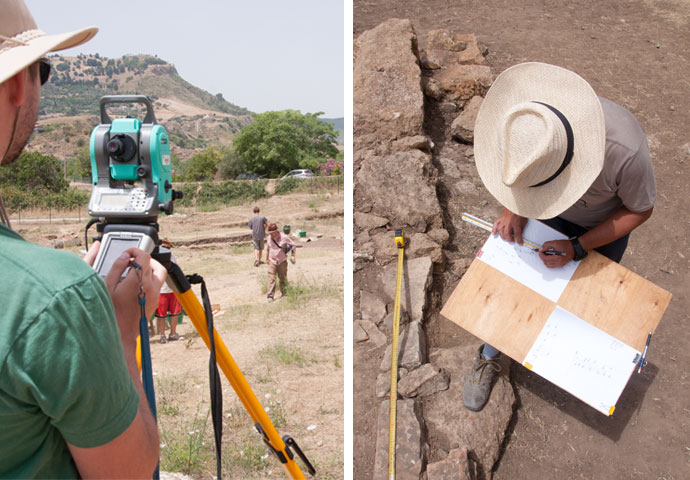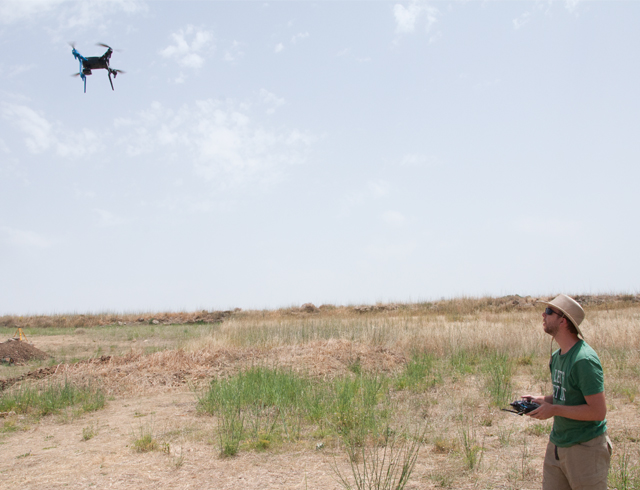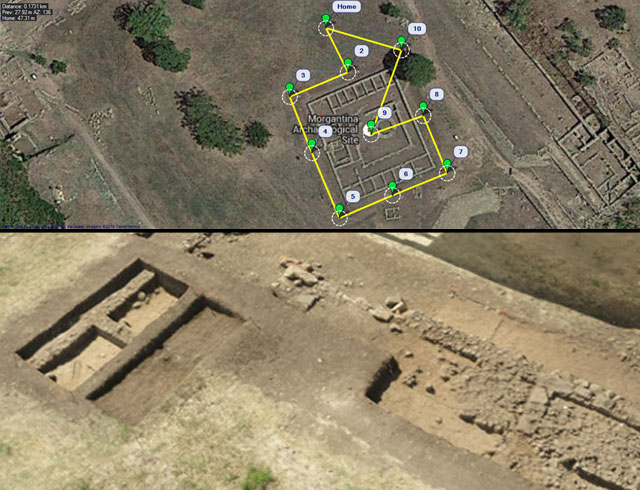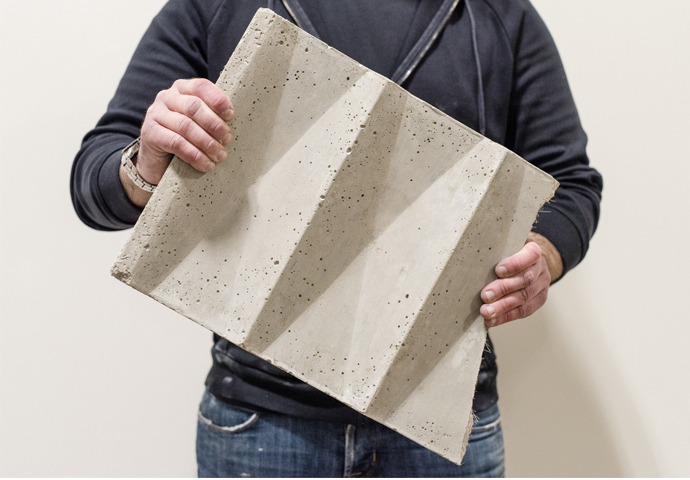Designing Recording Methods for Archaeology
This GIS image shows the Morgantina excavation site in central Sicily. Morgantina reached its peak in the third century BCE thanks to its fertile, grain-producing territory and its likely association with the wealthy empire based in Syracuse—the setting of Archimedes' famous bathtub discovery of density. With no modern city standing above Morgantina, the site provides one of the better records of the prosperity and the elaborate urban infrastructure achieved in its time. Remains include a large agora, Greek theater, large courtyard houses with early mosaics, and one of the earliest bath complexes, with an elaborate hypocaust system for underfloor heating.
For the past eight years, KieranTimberlake architect James Huemoeller has spent part of each year supporting the archaeological excavations for the Contrada Agnese Project (CAP), directed by Alex Walthall (University of Texas), at the ancient site of Morgantina in central Sicily. James' work developing and implementing data recording and management methods for the excavation continues a tradition started by the Renaissance architect Raphael, who advocated for the systematic recording of ancient ruins to preserve knowledge for future generations in a letter to Pope Leo X.
The excavation of Morgantina began in the 1950s with a Princeton University team and continues today under the directorship of Malcolm Bell III (Emeritus, University of Virginia) and Carla Antonaccio (Duke University). Over the years, architects have played an important role in the excavations and the recording of sequential stratigraphic layers of excavated material using traditional survey equipment such as the transit, stadia rod, and free-hand drawing tools. In parallel with these recording activities, architects also interpret and analyze the finds in order to reconstruct the ancient context, aiding archaeologists in understanding the uncovered features.
Traditional recording methods at an archaeological excavation include survey and free-hand drawing.
Archaeology is inherently a destructive process due to the removal of soil and artifacts from a site. Maintaining accurate records of the excavation is therefore essential to subsequent research and relies upon the skill set an architect at the site provides. To enhance these records, this year's excavation season saw the deployment of a quadcopter drone developed by AerialVector LLC that allowed for the creation of accurate 3D models and aerial photographs of the excavation during the course of the five-week season. The resulting models provided archaeologists with quick, 3D visual maps of the ongoing excavation, allowing for more accurate and comprehensive readings of the changing archaeological layers.
Drone technology was introduced by the architect to enhance data recording capability at the excavation site.
The use of a drone is part of a series of innovative approaches—including environmental analysis, paperless recording, and remote sensing—adopted by CAP in recent years to complement the traditional methods of archaeological fieldwork. These methods take the responsibilities of the architect beyond documentation of durable features or reconstructions of urban environments—toward leading a collaboration of specialists and managing their respective data in an accessible format to accommodate diverse research interests.
The image above shows the flightpath of the quadcopter drone overlaid on the excavation site. Below is an image of a portion of the site captured by the drone; it records a point in time in the excavation and can be used to create 3D models of the site.
This expanded role in archaeological fieldwork reflects the role of the architect in the building industry, where new technologies and specialists contributing to the design process have required architects to expand their methodology beyond the traditional tools once employed by architects like Raphael. With the new embassy in London, for example, KieranTimberlake employs advanced BIM technology to coordinate the efforts of more than twenty different consultants, numerous stakeholders, and several client groups into a coherent team. For the Green Roof Vegetation Study, the work of recording and mapping the plant life of green roofs on KieranTimberlake buildings has informed subsequent efforts to reduce storm water runoff in the built environment, control heat gain in roof membranes, and other initiatives. Both projects, at different scales, represent the roles architects often fulfill beyond design and demonstrate how their skills and expertise can apply to a variety of projects—including an archaeological excavation in central Sicily.








